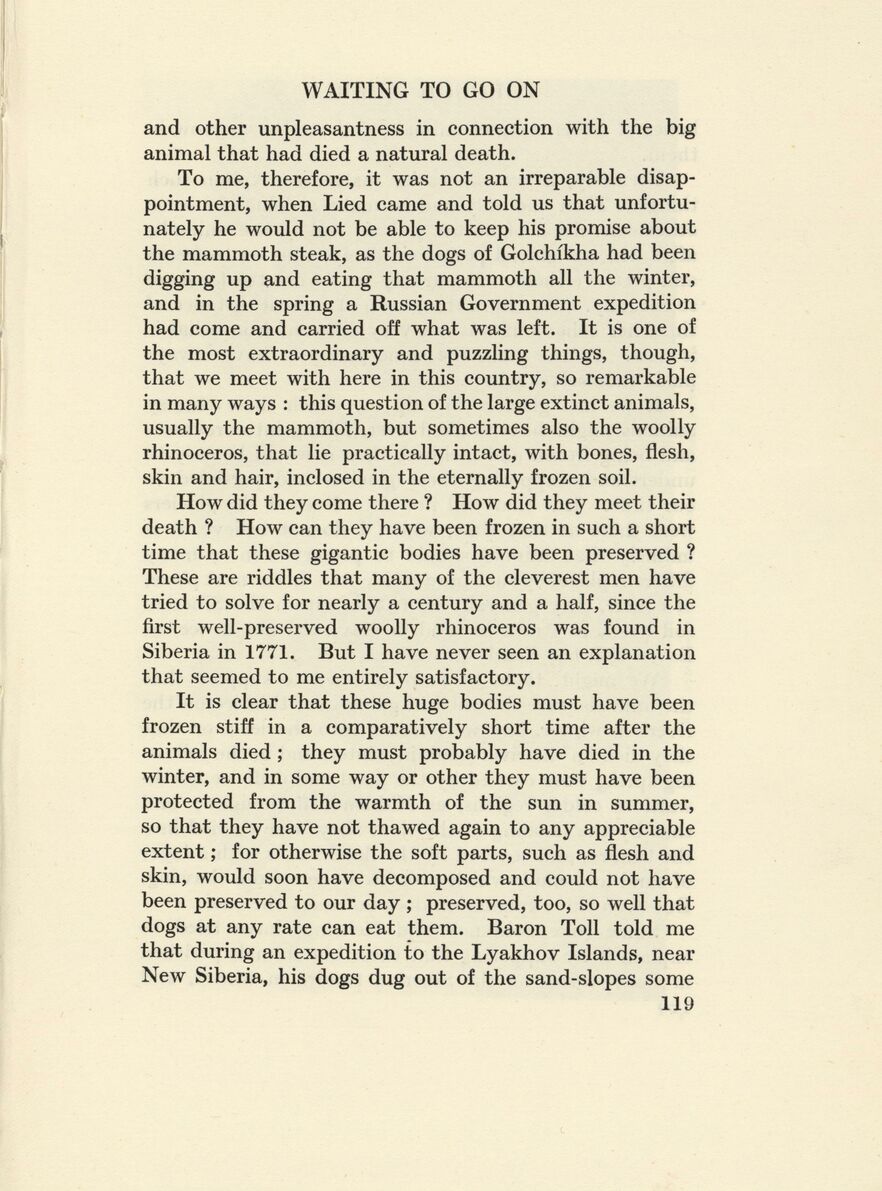
Full resolution (JPEG) - On this page / på denna sida - VI. Waiting to go on

<< prev. page << föreg. sida << >> nästa sida >> next page >>
Below is the raw OCR text
from the above scanned image.
Do you see an error? Proofread the page now!
Här nedan syns maskintolkade texten från faksimilbilden ovan.
Ser du något fel? Korrekturläs sidan nu!
This page has never been proofread. / Denna sida har aldrig korrekturlästs.
WAITING TO GO ON
119
and other unpleasantness in connection with the big
animal that had died a natural death.
To me, therefore, it was not an irreparable disap
pointment, when Lied came and told us that unfortu
nately he would not be able to keep his promise about
the mammoth steak, as the dogs of Golchikha had been
digging up and eating that mammoth all the winter,
and in the spring a Russian Government expedition
had come and carried off what was left. It is one of
the most extraordinary and puzzling things, though,
that wc meet with here in this country, so remarkable
in many ways : this question of the large extinct animals,
usually the mammoth, but sometimes also the woolly
rhinoceros, that lic practically intact, with bones, flesh,
skin and hair, inclosed in the eternally frozen soil.
How did they come there ? How did they meet their
death ? How can they have been frozen in such a short
time that these gigantic bodies have been preserved ?
These are riddles that many of the cleverest men have
tried to solve for nearly a century and a half, since the
first well-preserved woolly rhinoceros was found in
Siberia in 1771. But I have never seen an explanation
that seemed to me entirely satisfactory.
It is clear that these huge bodies must have been
frozen stiff in a comparatively short time after the
animals died ; they must probably have died in the
winter, and in some way or other they must have been
protected from the warmth of the sun in summer,
so that they have not thawed again to any appreciable
extent ; for otherwise the soft parts, such as flesh and
skin, would soon have decomposed and could not have
been preserved to our day ; preserved, too, so well that
dogs at any rate can eat them. Baron Toll told me
that during an expedition to the Lyakhov Islands, near
New Siberia, his dogs dug out of the sand-slopes some
<< prev. page << föreg. sida << >> nästa sida >> next page >>